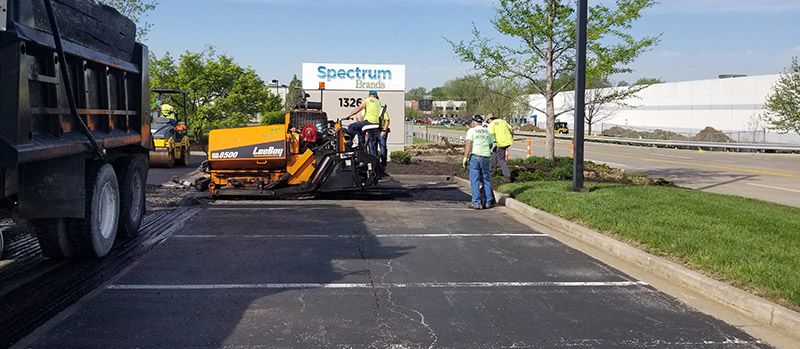Indicators on A1 Professional Asphalt & Sealing Llc You Should Know
A1 Professional Asphalt & Sealing Llc Fundamentals Explained
Table of ContentsThe Definitive Guide for A1 Professional Asphalt & Sealing LlcThe Only Guide for A1 Professional Asphalt & Sealing LlcA1 Professional Asphalt & Sealing Llc for DummiesGet This Report on A1 Professional Asphalt & Sealing LlcA1 Professional Asphalt & Sealing Llc Things To Know Before You Buy

The oil in a vehicle engine is not simply oil. It consists of a selection of ingredients to enhance the lorry's efficiency. These consist of polymers, thickness modifiers, warm stabilizers, added lubes, and wear additives. The REOB has all the ingredients that were in the waste oil as well as the wear metals from the engine (mainly iron and copper).
However, by making several blends making use of various REOB examples and different asphalt binders, the variants greatly can be averaged out. Several States gave samples of known REOB structure to TFHRC scientists, who examined the examples to compare the percent of included (understood) REOB to the found (tested) quantity. The analyses revealed a similar portion of added and located REOB.
The smart Trick of A1 Professional Asphalt & Sealing Llc That Nobody is Discussing
They obtained a frustrating reaction. The TFHRC scientists assessed 1,532 examples from 40 States, one Canadian district, and two Government Lands Freeway divisions. They evaluated each example twiceamounting to even more than 3,000 analyses. None of those States recognized that the asphalt they were purchasing contained REOB. One State insisted its examples had no REOB.
Of the 1,532 samples evaluated, 12 percent consisted of REOB, and some contained appreciably high degrees of it at 1020 percent. The highest possible level was 34 percent in a sample from Texas, which TxDOT had actually used in a patching compound. This screening likewise disclosed the presence of phosphoric acid in 11 percent of the examples, and 2 percent contained ground tire rubber.
2 years back at TRB's annual meeting, the Federal researchers held an REOB workshop and offered the searchings for of their laboratory analyses to a standing room-only group. Some firms do not specifically ban REOB, they do impose physical examinations that avert its useeffectively a ban. Others do not outlaw it by spec, but have arrangements with asphalt vendors to avoid making use of REOB
How A1 Professional Asphalt & Sealing Llc can Save You Time, Stress, and Money.
A handful do permit REOB, some within certain restrictions. As an example, Ohio and Texas restriction levels to less than 5 percent of the asphalt. To establish a trustworthy test approach that all States can utilize, the TFHRC scientists established a round-robin test plan. The individuals are 11 State highway firms (Illinois, Massachusetts, Minnesota, Mississippi, Montana, North Carolina, Oklahoma, South Carolina, Texas, Vermont, and Wyoming), 2 independent screening laboratories, the Ministry of Transport in Ontario, Queen's College in Ontario, and an Ontario paving contractor.
In total amount, the scientists prepared and shipped 720 blends. The individuals are checking the samples independently using the guidelines provided by the TFHRC researchers. The round-robin screening is nearly completed, and TFHRC is in the procedure of gathering the results. The result will be a suggested AASHTO test technique that any kind of State can embrace and utilize (a1 professional).
The sidewalk with REOB, which is situated 0.6 mile (1 kilometer) from the sidewalk without REOB, has the same subgrade, website traffic thickness, and environment. The section of Highway655 with 5 to 10 percent REOB revealed substantial splitting. In this example, the visibility of REOB was the determined reason for cracking at a low temperatures.
A section of test sidewalk in Minnesota (MN1-4) found to include REOB likewise split too soon. The pavement executed well for the first 3 to 4 years, however then began to break.
A1 Professional Asphalt & Sealing Llc for Dummies
The examinations were not comprehensive, however they revealed that at levels of 6 percent or even more, the tensile stamina of the asphalt dropped significantly. At a level of 3.5 percent REOB, the variation in the physical examination approaches was better than the impact of REOB. Actually, it was tough for scientists to examine whether REOB existed.

One binder specification thought about is the distinction between the low temperature crucial requirements temperature for stiffness (S) in the flexing light beam rheometer and the flexing light beam rheometer creep incline (m-value) kept in mind as Tcritical. 2 independent research study teams, one from AASHTO and the various other from the Asphalt Institute, wrapped up that even more research is needed on the use of REOB in asphalt.
Formerly, all asphalt testing measured design buildings such as rigidity. These examinations do not reveal what products had been included in the asphalt. One sample received during the TFHRC study had a very strange evaluation. The sample had the following examination results: Superpave PG 64-28 informative post with a heat quality of 67.3 Tcritical on the flexing light beam rheometer was 6.7 degrees Celsius.

9 Easy Facts About A1 Professional Asphalt & Sealing Llc Described
These outcomes show there are weaknesses in the standard design testing protocols that might be exploited. The manufacturer might have an economic benefit and the product passes all the standardized examinations, but the item may not be advantageous to guaranteeing long-lasting efficiency. To address this concern and the development of new asphalt additives and extenders, TFHRC is beginning a research study program to utilize portable spectroscopic devices, x-ray fluorescence spectroscopy, and Fourier change infrared spectroscopy to enable analyses to be done in the field instead of needing to take samples back to the lab.